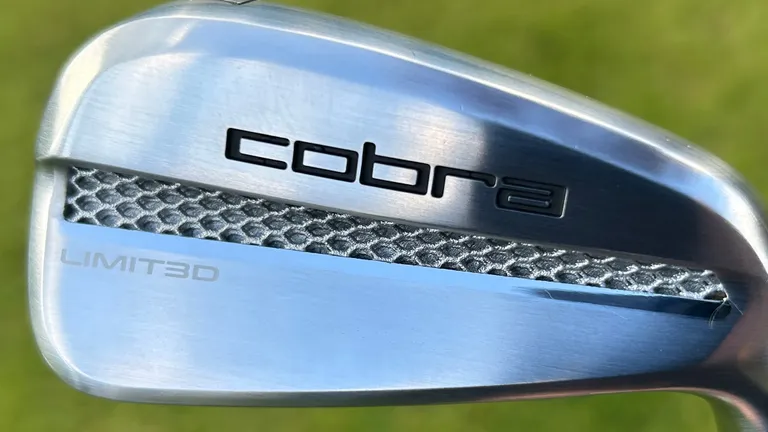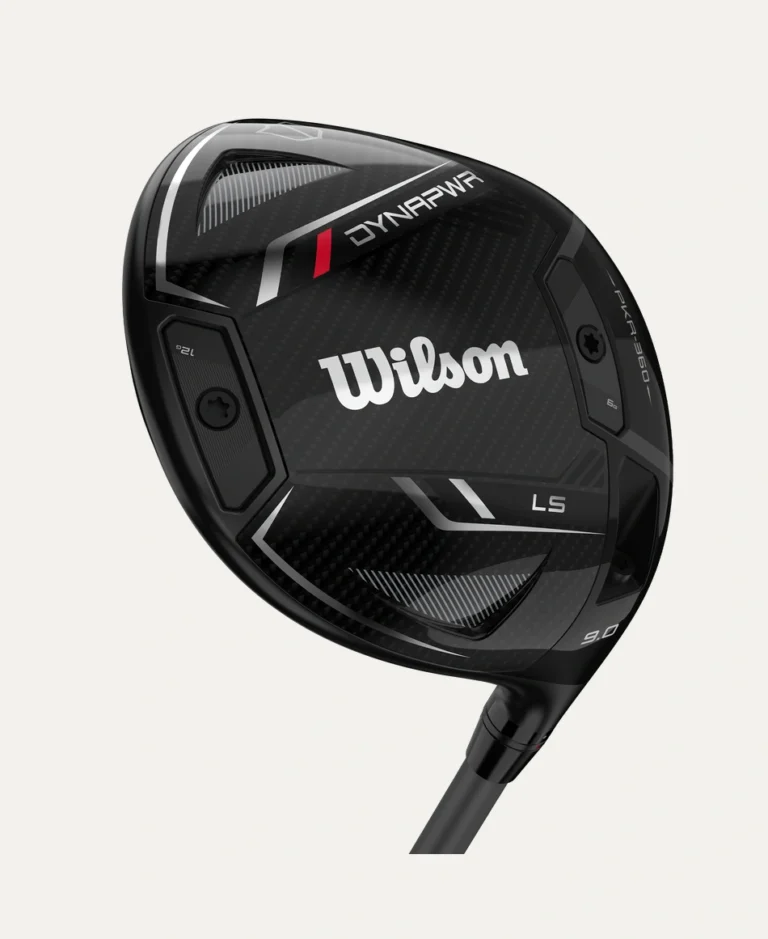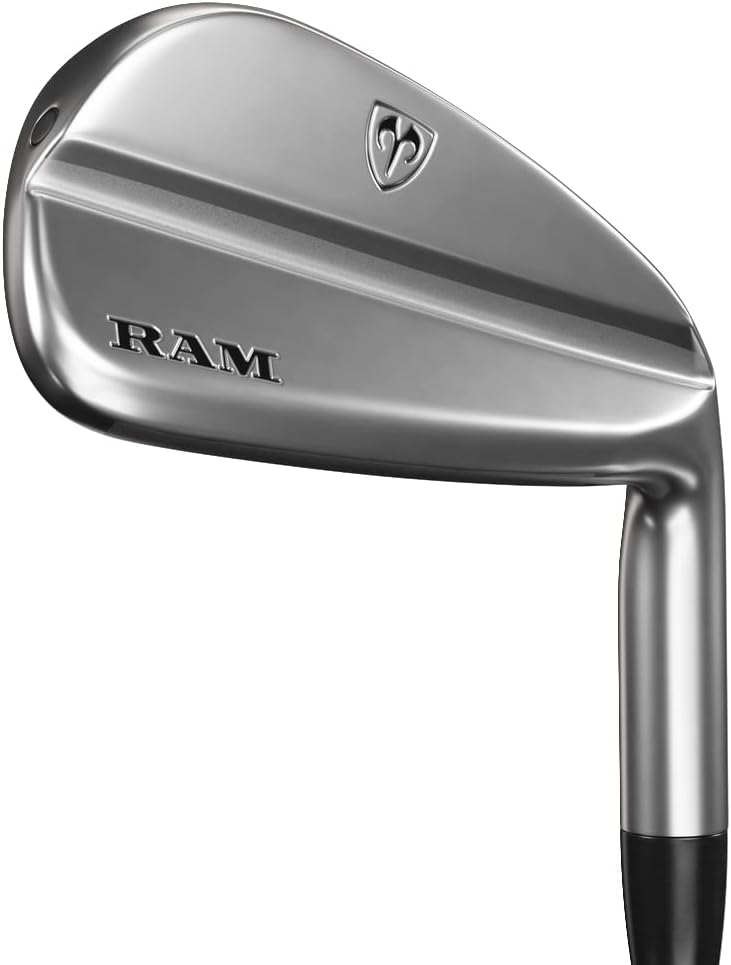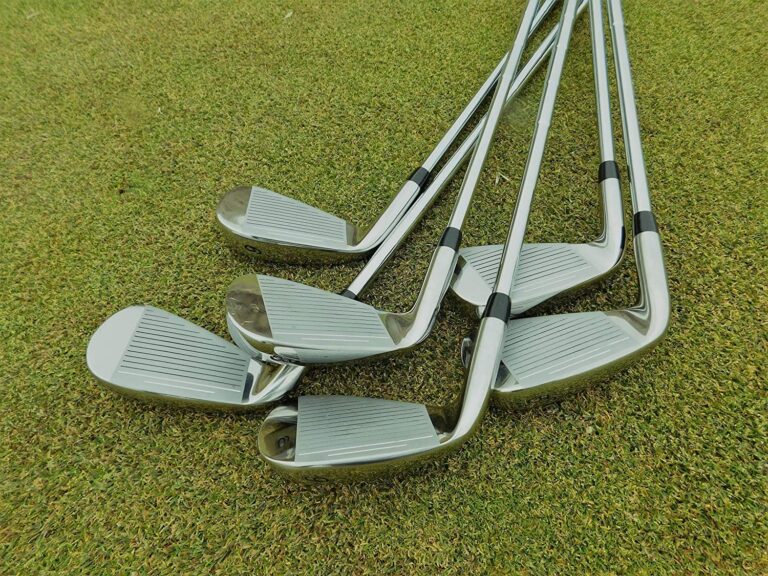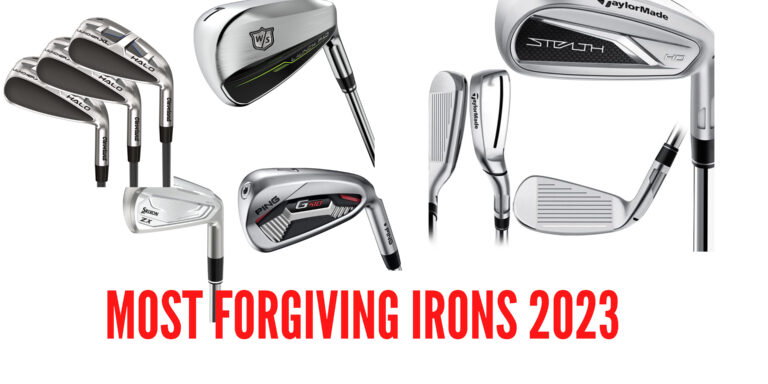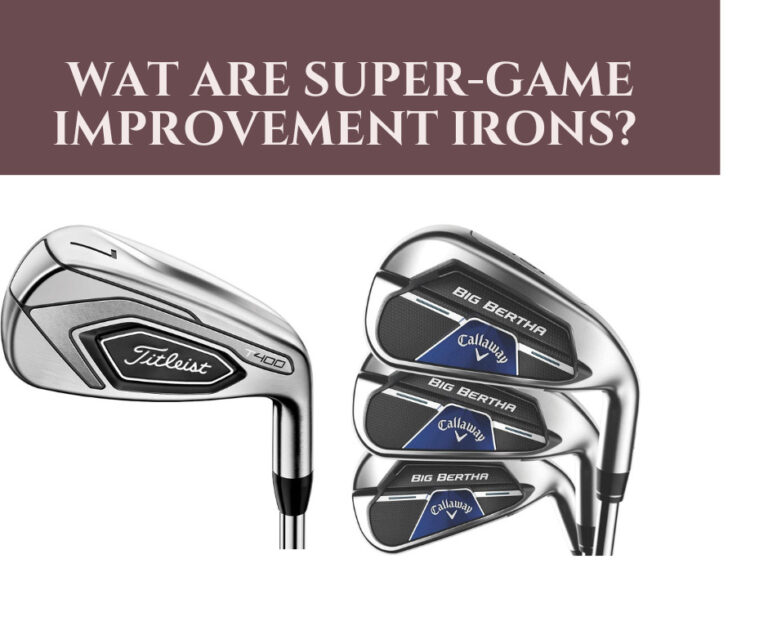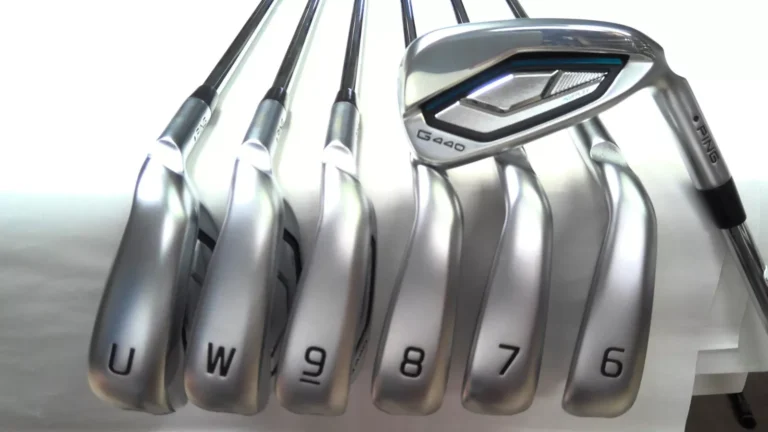Cobra Limit3D Irons Review
Welcome to the Cobra Limit3D irons review. Cobra has been at the forefront of combining sleek looks, great feel, and advanced technology. Before unveiling the LIMIT3D irons, Cobra’s previous mainstream offering for accomplished players was the King Tour irons. Those had a more traditional metal construction but still provided decent forgiveness for better players. With the new 3D-printed technology, Cobra created the LIMIT3D irons as a limited run (only 500 sets worldwide) to test the waters of metal additive manufacturing in irons, blending the look of a compact blade with game-improvement forgiveness.
Later, Cobra introduced a second iteration sometimes referred to as the 3D Printed Tour irons, expanding the technology to a regular release model. These irons share much of the same 3D-printed lattice design and tungsten perimeter weighting, yet they remove the “limited-edition” aspect.
In practice, the overall performance of both sets is comparable, although the new unlimited edition has slightly different branding, a broader custom availability, and a lower purchase barrier. Here, we take a close look at the LIMIT3D irons—the original 3D-printed statement piece from Cobra—and unpack what makes them so special.
Cobra Limit3D Irons Review: Overview
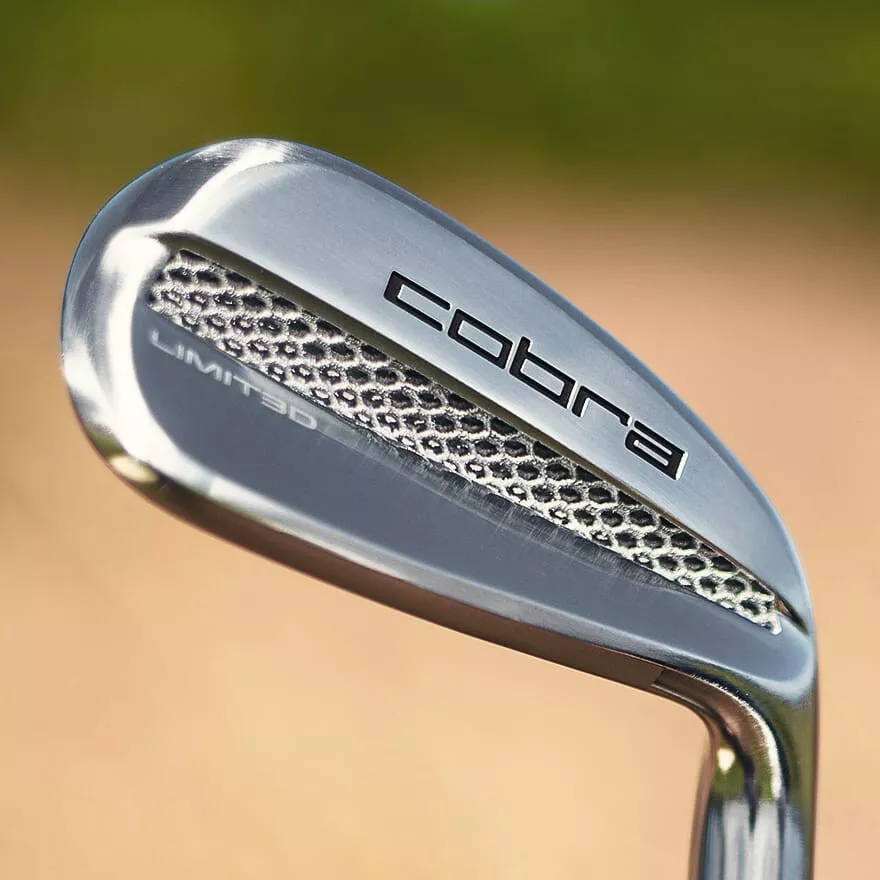
The Cobra LIMIT3D irons are widely lauded for their unique ability to generate the premium feel associated with forged blades while adding enough perimeter weighting to deliver game-improvement forgiveness[1]. They accomplish this by using a 3D-printed internal lattice structure that repositions roughly 33% of the head’s mass out toward the heel and toe. The idea is simple: Start with a sleek blade shape, hollow out the center via 3D printing, and move the saved weight to areas that will forgive off-center strikes.
Because shifting so much weight can be challenging in conventional casting or forging, 3D printing is a perfect fit. The novel design also improves the acoustics of the impact, creating a distinctly satisfying “click” that many testers say feels incredibly soft. The limited nature of the first run—500 sets total—arched eyebrows across the industry, and they sold out quickly. Enthusiasm aside, the true question remains: Are these just a flashy technology demo, or do the LIMIT3D irons offer next-level performance? Most reviews indicate it’s a little bit of both.
Look/Design
Cobra aimed to give these irons the look of a small, compact players’ blade. When you pick one up, the first impression is a streamlined profile. The top line is moderately thin—thicker than a pure muscle-back but not by much. There’s almost no offset, which should please purists craving a more “tour-inspired” appearance. The back of the iron is where things get interesting. You’ll find a polished finishing with an exposed lattice—for aesthetics only—plus a subtle “LIMIT3D” etching. Although it doesn’t serve a technical purpose outwardly, it does hint at the unique internal structure within.
In the address position, the face length is a bit longer than some might expect from a blade, giving a slight confidence boost. While the shape still looks more like a better-player club than an oversized game-improvement head, it’s far from intimidating. Cobra also did a good job blending the transition from hosel to topline. Whether they’re cradling it in the shop or setting it behind the ball on the fairway, golfers comment about the modern, futuristic vibe.
Features/Technology
Rather than forging or casting, Cobra “prints” the heads with 316 stainless steel using a process called Direct Metal Laser Sintering. This advanced manufacturing approach builds the head layer by layer, forming intricate geometry in the center known as a lattice. This structure does a few things:
- Weight Savings: It removes a large portion of steel from the center without compromising face support, eliminating 33% of the total clubhead weight[1][2].
- Mass Reallocation: Cobra takes that saved weight (around 100g) and redistributes it toward the heel and toe via tungsten inserts. That means a higher moment of inertia (MOI) and a lower center of gravity (CG).
- Sound & Feel Optimization: The lattice effectively tidies up vibration patterns, which leads to a sweeter, more muted strike sensation.
The upshot is an iron that hits more like a game-improvement design in terms of forgiveness and potential launch, but it offers the premium feedback players typically seek in a more compact shape.
Additionally, these irons come standard with Arccos-affiliated grips, which means you can capture shot data if you opt to use the accompanying sensor system. That’s typical for Cobra clubs but notable if you’re interested in analytics.
Cobra Limit3D Irons Specification
The LIMIT3D set is sold in a 4-PW configuration, with no left-handed version for the initial run. Here’s a general breakdown of the specs:
| Iron | Loft | Standard Length | Suggested Lie |
|---|---|---|---|
| 4 | ~21.5° | 38.75″ | 60.5° |
| 5 | ~24° | 38.25″ | 61.0° |
| 6 | ~27° | 37.75″ | 61.5° |
| 7 | ~31° | 37.25″ | 62.0° |
| 8 | ~35° | 36.75″ | 62.5° |
| 9 | ~39° | 36.25″ | 63.0° |
| PW | ~44° | 35.75″ | 63.5° |
Compared to many traditional blade sets, these lofts lean a bit stronger, but not as aggressive as some ultra-distance irons. The stated retail price upon release was around $2999 (USD), partly due to the novelty of the technology and the small production numbers. Limited-edition packaging and some commemorative extras accompanied that purchase, including special boxing and a 3D-printed divot tool in some cases. By contrast, the re-release and subsequent 3D Printed Tour irons sit around $2450. Still premium, but slightly less steep.
PERFORMANCE
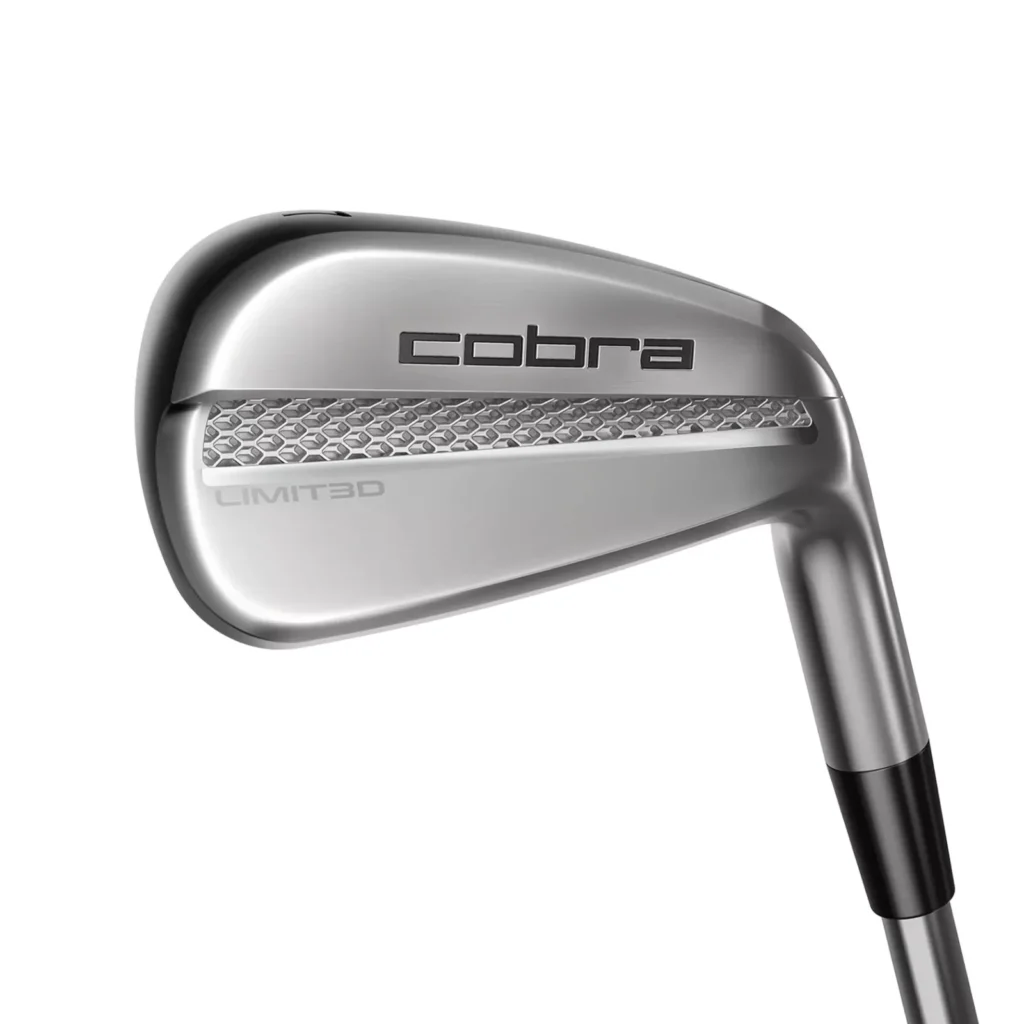
Distance
The LIMIT3D irons hit the ball about as far as many popular players-distance irons, so they’re no slouch in this department. Center strikes benefit from a stable face that efficiently transfers energy to the ball. While they’re not designed to have the super-thin faces that flex like modern game-improvement irons, you might notice consistent yardages on each well-struck shot. The spin rates, in many tests, hovered around mid-level—neither ridiculously high nor dangerously low—so you typically get a controllable ball flight that still carries well.
Where they impress is off slight mis-hits. Instead of losing 10-15 yards, these irons retain a solid portion of ball speed, meaning you might only lose a few yards and keep a playable result. That kind of consistency matters, especially when you’re dealing with approach shots that need to find or hold a green.
Forgiveness
Despite the smallish appearance, the LIMIT3D irons are surprisingly forgiving, thanks to the tungsten lumps in the toe and heel. This broadens the sweet spot effectively, making the shot outcome more stable on off-center swings.
The face doesn’t flex like a pure distance iron, so you won’t see a huge jump on toe or heel strikes, but you also won’t see the shot die like it might on a true blade. For a small-footprint iron, the MOI is impressively high. Golfers who appreciate workability but still desire margin for error will like the blend here.
Feel & Sound
No matter how advanced the technology, better players often want to know how an iron feels. In that department, the LIMIT3D irons deliver. The combination of a stainless steel body plus the internal lattice produces a crisp yet muted sensation at impact. You still get immediate feedback when you miss the sweet spot, but you aren’t punished with harsh vibrations or a sharp, “pingy” noise. In fact, testers frequently compare the feel to a forged blade—remarkable for a 3D-printed design.
On pure hits, the clubface feels stable, with a soft “click” that many find addictive. Higher-handicap golfers might also enjoy that it never feels too lively or jarring on mishits.
Playability/Trajectory
Because of the tungsten-lowered CG, it’s not overly difficult to launch shots high, even if the lofts are moderately strong. The upper trajectory window is plenty accessible, so you can hold greens or shape shots as you see fit.
These irons aren’t as workable as a pure muscle-back, but that’s partly because that tungsten weighting wants to keep the face stable and limit side spin. If shaping big hooks or slices is your game, you may need to work a bit harder.
However, smaller draws and fades are manageable. For everyday players, the straighter flight lines can be beneficial, as you get consistent mid-to-high flights that give you enough stopping power on approach.
PROS & CONS
Pros
- High Forgiveness in a Blade-Style Profile: Off-center hit stability rivals that of bigger game-improvement irons[1].
- Innovative Look & Feel: The 3D-printed design is a conversation starter, and the impact sensation is quite soft.
- Balanced Distance: Longer than typical blades but not so “hot” that it’s tough to control spin or yardages.
- Exclusivity Factor: Owning a set of 500 can be appealing for those who enjoy collectible or rare clubs.
Cons
- Premium Price Point: They launched at around $2999, placing them among high-end, limited-edition offerings.
- Limited Run & Availability: Only 500 made initially, and they sold out quickly. New sets are occasionally re-released, but not always with the same “limited” extras.
- No Left-Handed Version in the First Batch: Southpaws had no official option early on.
Comparison With Similar Models.
In Cobra’s own lineup, the King Tour irons were the immediate “conventional” neighbor, offering a more standard cast or forged head with decent forgiveness. By most accounts, the LIMIT3D provides higher MOI and a lower CG, so distance and stability on mis-hits tend to get a slight boost.
Another big difference is feel: the King Tours are more in line with a typical forging, whereas the LIMIT3D’s 3D-printed lattice resonates differently, creating a distinctive, softly crisp sound.
The new 3D Printed Tour irons that followed the LIMIT3D are nearly identical in concept, but they’re easier to acquire and more reasonably priced. If you missed out on the limited run but still want the “3D-printed” experience, the standard version is essentially the same design with a minor tweak to the branding and slightly updated finishing.
In broader terms, if you compare the LIMIT3D to competitor irons like Titleist T150 or TaylorMade P770, you’re looking at a similar players-distance category, albeit with more cutting-edge construction in the Cobra. The LIMIT3D might not boast the absolute highest ball speeds, but it stands out for its distinctive manufacturing story and potent forgiveness.
Who Can Play This Irons
Although the LIMIT3D irons may look like a tour-level set, Cobra intentionally engineered them to be playable for mid- to even higher-handicap golfers who want a more compact shape. High single-digit or mid-handicap golfers who aren’t consistent enough to wield a true blade might find these irons fill that gap. On the other end of the spectrum, even lower handicappers can appreciate the stable performance and unique feel they provide, especially if they’re open to new technology.
If you absolutely require the maximum in face flex and pure distance, you might look elsewhere because these irons don’t deliver the same “explosive” face design as some super game-improvement models. And if you’re staunchly loyal to the classic forging feel, you might find the 3D printing approach too unusual, though many testers still find them impressively soft. But for most in the low- to mid-handicap bracket who crave iron consistency, these can be an intriguing option.
Conclusion

Cobra broke new ground with the LIMIT3D irons, delivering a limited-edition set that fused a tour-preferred shape with game-improvement forgiveness through 3D-printed technology. By hollowing out the clubhead and inserting a carefully engineered lattice, Cobra managed to move ample mass to the perimeter, resulting in a club that looks sleek yet plays forgiving. Even if they first appeared as a collector’s piece, it turns out that these irons actually back up the hype with solid distance, an easy launch, and a surprisingly plush feel at impact. They’re built for consistency in ways typical muscle-backs aren’t.
Over time, the 500-set exclusivity made them tough to obtain—driving home the notion that this was more than just a technology proof-of-concept. Cobra later addressed the interest by launching a broader 3D Printed Tour lineup at a slightly lower cost, featuring basically the same cutting-edge fundamentals as the LIMIT3D. The big takeaway is that 3D printing doesn’t appear to be a one-off experiment. For those who managed to grab a set of the LIMIT3D irons, you own a piece of golf history.
And if you’re genuinely curious about new directions in iron design—where advanced geometry meets improved performance—these irons are the ultimate conversation starter on the range. With the ability to produce sets more quickly and add tungsten with precision, Cobra has redefined what’s possible in a player-oriented iron. It might be pricey, and definitely not for everyone, but the LIMIT3D irons raise the bar on how modern materials, manufacturing, and engineering can intersect to create a better golfing experience. If you can swing it—and find a set—the payoff in feel, forgiveness, and bragging rights is substantial.
Just remember, you’re not just buying an iron set, you’re buying a glimpse of the future of golf-club production. And if you missed the limited edition, there’s now a more widely available version that provides essentially the same performance. Either way, it’s an exciting time to tee up with Cobra. After all, hitting a 3D-printed iron is more than just playing golf—it’s having a front-row seat to emerging technology on your stroll down the fairway.

